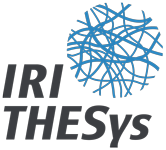Urban vibrations: how physical waves come to matter in contemporary urbanism
Cities have turned into critical zones of the contemporary: arenas where the interdependence of environmental processes, infrastructural arrangements and human lives is increasingly apparent and disputed. Research in anthropology, science and technology studies (STS) and other fields on health hazards and environmental disasters in urban areas has been crucial in unearthing invisible forms of environmental injustice and slow violence. In this presentation, Ignacio Farías focuses on a mostly overlooked type of environmental issue, airborne waves, and explore how solar heat and environmental noise ‘come to matter’ in contemporary urbanism. This involves understanding how physical waves become associated with specific materials, bodies and devices through which they are felt, known or manipulated, as well as how they become matters of public concern and urbanistic intervention. The theoretical and governmental challenge waves pose relates to their ontological indeterminacy, as waves are not entities, but intensities that propagate through things. Addressing this challenge is crucial for reassessing the material politics of the Anthropocene as entailing contested practices of materializing abstract or imperceptible environmental disturbances.


